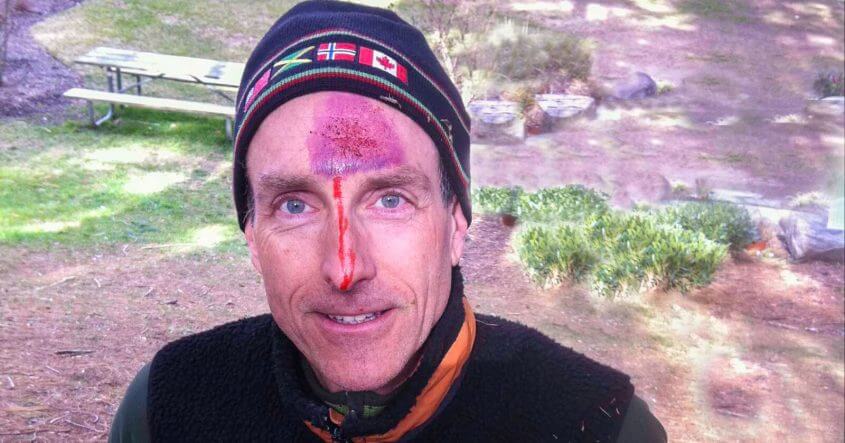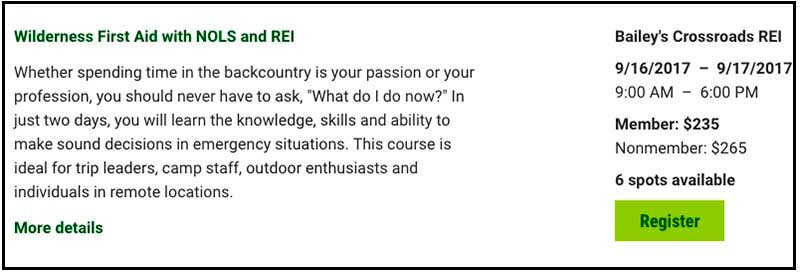Why Wilderness First Aid Matters and How to Take a Course
Knowing what to do in a medical emergency in the wilderness can make all the difference to someone in need. That someone might even be you! I was reminded of this as I refreshed my Wilderness First Aid (WFA) certification this past weekend. In fact, just a few years back I used my Wilderness First Aid skills in the Grand Canyon to assess a serious wilderness medical emergency and provide comfort and care to a patient in the middle of winter. I eventually coordinated an emergency helicopter evacuation via satphone. Take home message: stuff can and does happen in the backcountry, and YOU can make a difference!
| Note: Taking a Wilderness First Aid Course is easy! And it is as close as your local REI Store.
“In just two days, you will learn the knowledge, skills & ability to make sound decisions in an emergency.” |
Lead photo: Things can get pretty realistic in a WFA course. Our instructors did a convincing job of making my head look as if I’ve been struck by a large rock. My role was to “play” someone with a concussion. The rest of the group had to assess and figure out the problem using the standard WFA “Patient Assessment System.”
Why a Wilderness First Aid Course vs. “Regular” First Aid Course
- In a populated area you call 911 and until an EMT’s arrive, your job is to keep the injured person stable and alive—CPR, stop bleeding etc.
- In the wilderness, 911 is not usually an option & the EMTs aren’t coming right away. It may be a day or two until help arrives. You need to be a lot more self-reliant and make a lot of good decisions.
- As such, in the wilderness, you have more responsibilities: to figure out what’s wrong with the person, then treat, stabilize and care for them. Essentially, doing much of what EMTs would do.
- Wilderness First Aid focuses more on injuries likely to happen in the wilderness—hiking, backpacking, climbing, backcountry skiing, etc.
- You have far fewer first aid materials at hand vs. in a populated area. You need to learn how to re-purpose hiking, backpacking gear to bandage, splint, etc.
- The List of Wilderness First Aid Topics is in the last section of this article
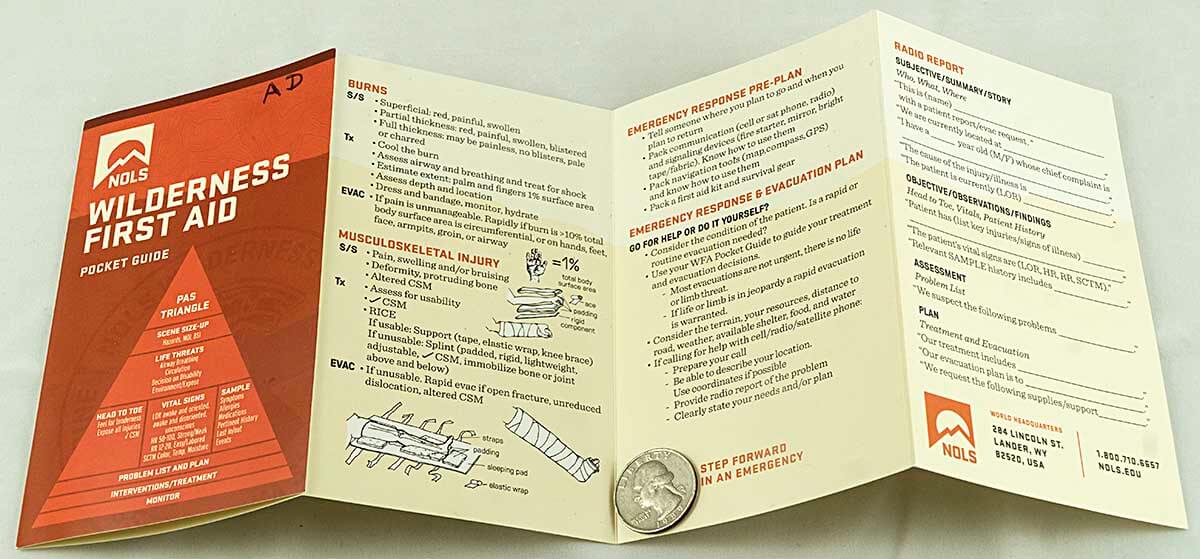
Only 10g or 1/3 oz! The incredibly useful, light & compact NOLS Wildness First Aid Pocket Guide goes into my first aid kit on every trip. BUT! it’s meant to be a refresher for people who have taken the WFA course and are familiar with the material. It is far less useful if you haven’t taken the course.
The Easiest Way to Take a Wilderness First Aid Course
The short answer is at your local REI Store. This is where I did my WFA course last weekend. The course is run by REI in cooperation with NOLS Wilderness Medicine, the recognized leader in this area. REI makes it easy by hosting the NOLS instructors and providing a classroom and an outdoor area to practice various emergency scenarios. And I can’t say enough good things about the expertise, professionalism and teaching skills of our two NOLS instructors, Clemencia Caporale and Ryan Murphy.
How to Register for a WFA Course
Note: WFA courses fill up fast. As such, it’s always better to sign up early for courses. This is the voice of experience. I was a bit late scheduling this year, and by then my first two choices were already filled.
First Choice – Your local REI
Go to WILDERNESS MEDICINE ACTIVITIES on the REI Site. Put in your zip code and look for courses titled “Wilderness First Aid with NOLS and REI”
If you don’t find a match, or don’t live near an REI store, you can try the NOLS Wilderness Medicine site. Here’s a link to NOLS Wilderness First Aid Courses. Finally, Landmark Learning (a NOLS affiliate) also offers Wilderness First Aid Classes
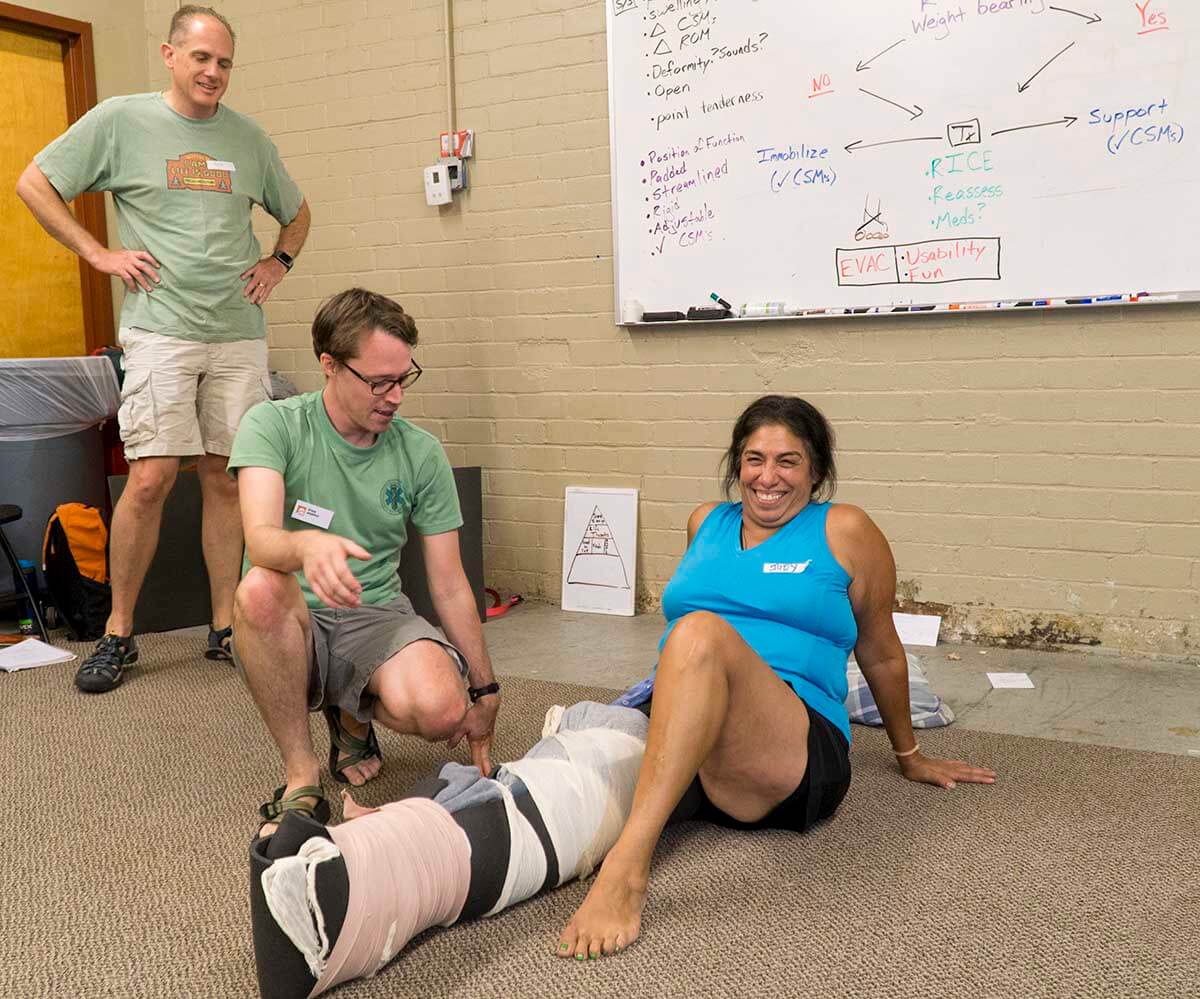
Instructor Ryan Murphy demonstrating an improvised splint for lower leg injury using materials you would have on hand backpacking. In this case, a sleeping pad and clothing. This is an unusable injury and she will not be walking out. [Course section on Musculoskeletal Injuries]
Major Topics of NOLS Wilderness First Aid Course
- Patient Assessment System (how to systematically figure out what’s wrong)
- Emergency and Evacuation Plans (when to stay put, when to evac., etc., including how to phone in a good “radio” report)
- Emergency Communications Devices – Strengths, Weaknesses, and Use
- Spine Injuries
- Head Injuries
- Shock (identifying and treating it)
- Wilderness Wound Management (Simple scrapes to deep gashes, & burns; Infection management)
- Musculoskeletal Injuries (sprains, muscle tears, dislocations and broken bones)
- Heat Illness (heat exhaustion, dehydration, heat stroke)
- Cold Injury (hypothermia, frostbite)
- Lightning (prevention and treatment)
- Altitude Illness
- Allergic Reactions, e.g. bee stings, food allergies, etc. (anaphylaxis and EpiPen training)
- Finally, figuring out the right First Aid Kit to carry.
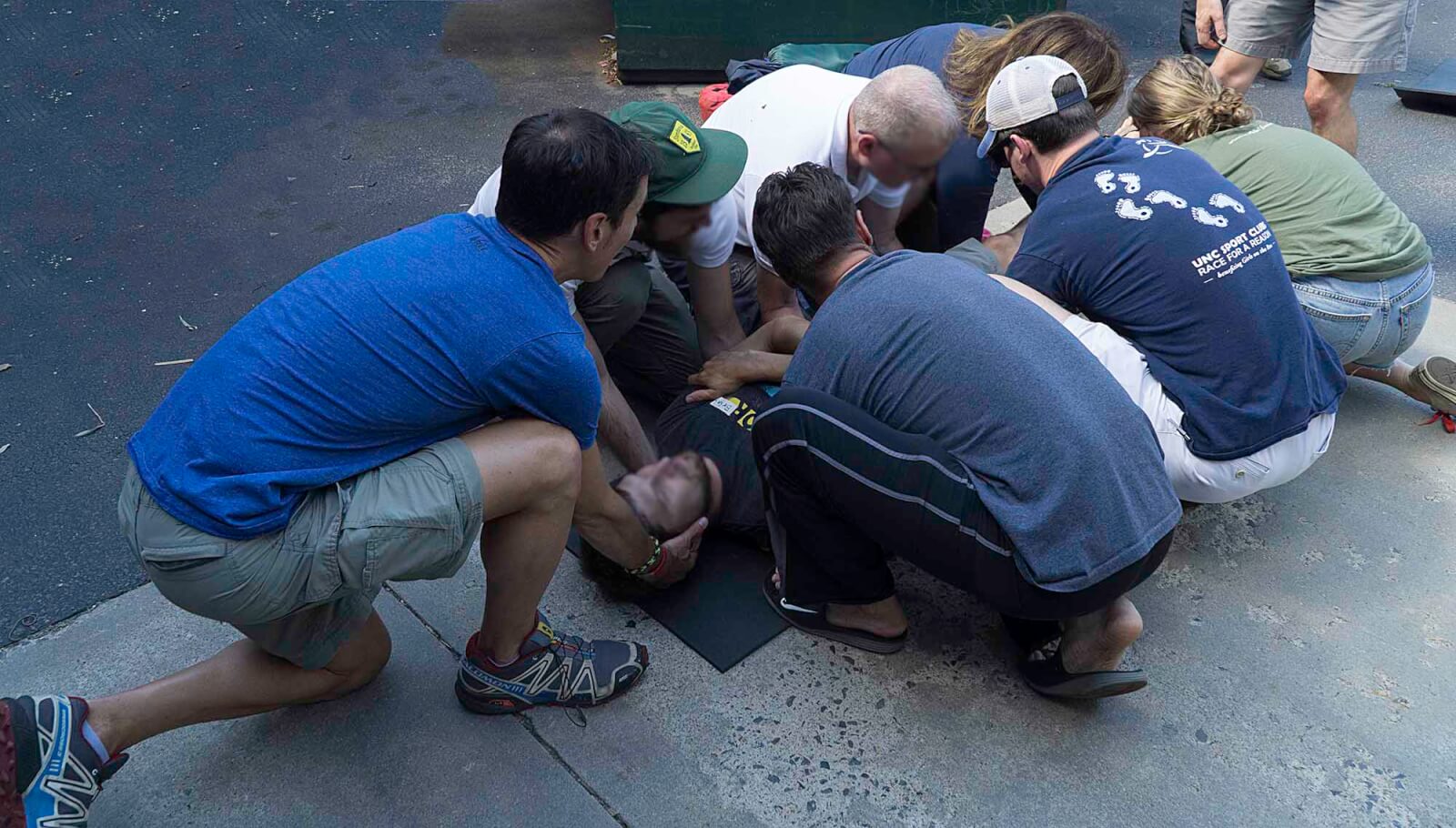
Preparing to “BEAM*” carry an injured person to a safer and more comfortable area. This method of carrying keeps the patient’s neck and spine stabilized in case of a suspected spinal injury. No special equipment like a backboard is needed. [* BEAM stands for Body Elevation and Movement]
What to Expect
Duration: This course is two 8-hour days. Usually Saturday and Sunday. WFA courses are offered year round.
They usually start at 9am and finish at 6pm, with an hour lunch midday.
Cost: Approx. $215 to $265
Note: Many times there is also an optional CPR/AED course run Friday Night (most guiding programs require certification in both Wilderness First Aid and CPR/AED). You can also take CPR/AED separately—from your local Red Cross (tons of times and options).
The course is definitely “hands on.” You’ll learn the super-professional way to hands-on examine fellow participants—to find injuries, bleeding, take pulse, check for skin temperature, etc.—even carrying injured people and moving them to more comfortable positions. You’ll do a lot of realistic simulations and ask each other some interesting and sometimes blunt and detailed personal questions that you wouldn’t normally ask people. All of this is essential to provide the best care for your patient!
Dress for activity
Since you courses are year round and you’ll be outside some of the time, you’ll need to bring clothing appropriate for the weather (heat/sunshine, cold etc.). Also, you will be involved in a number first aid scenarios, many likely on the ground. As such, you may wish to bring an insulated pad or crazy creek chair for your comfort during these scenarios. This course uses stage blood for realistic scenarios, which may stain some fabrics. So wear clothing you do not mind getting dirty/stained. The classroom environment generally lends itself to casual clothes and a pair of comfy shoes or slippers. In summary, come equipped with a light daypack, your lunch and snack food, comfortable clothes, and enough insulation to keep you warm during the outside scenarios in colder weather.
Next Steps?
There is also a longer course, Wilderness First Responder (WFR), for folks who already know something about first aid and want to take their skills to a whole new level. If so, checkout the NOLS WILDERNESS FIRST RESPONDER (WFR) Course.
Conclusion
Remember that Wilderness First Aid matters! Not only for someone in your own party, or somebody else you come by that needs help—but also potentially yourself. You might think it will never happen to you our your group, but it can. And if it does, knowing those skills can literally mean the difference between life and death.

